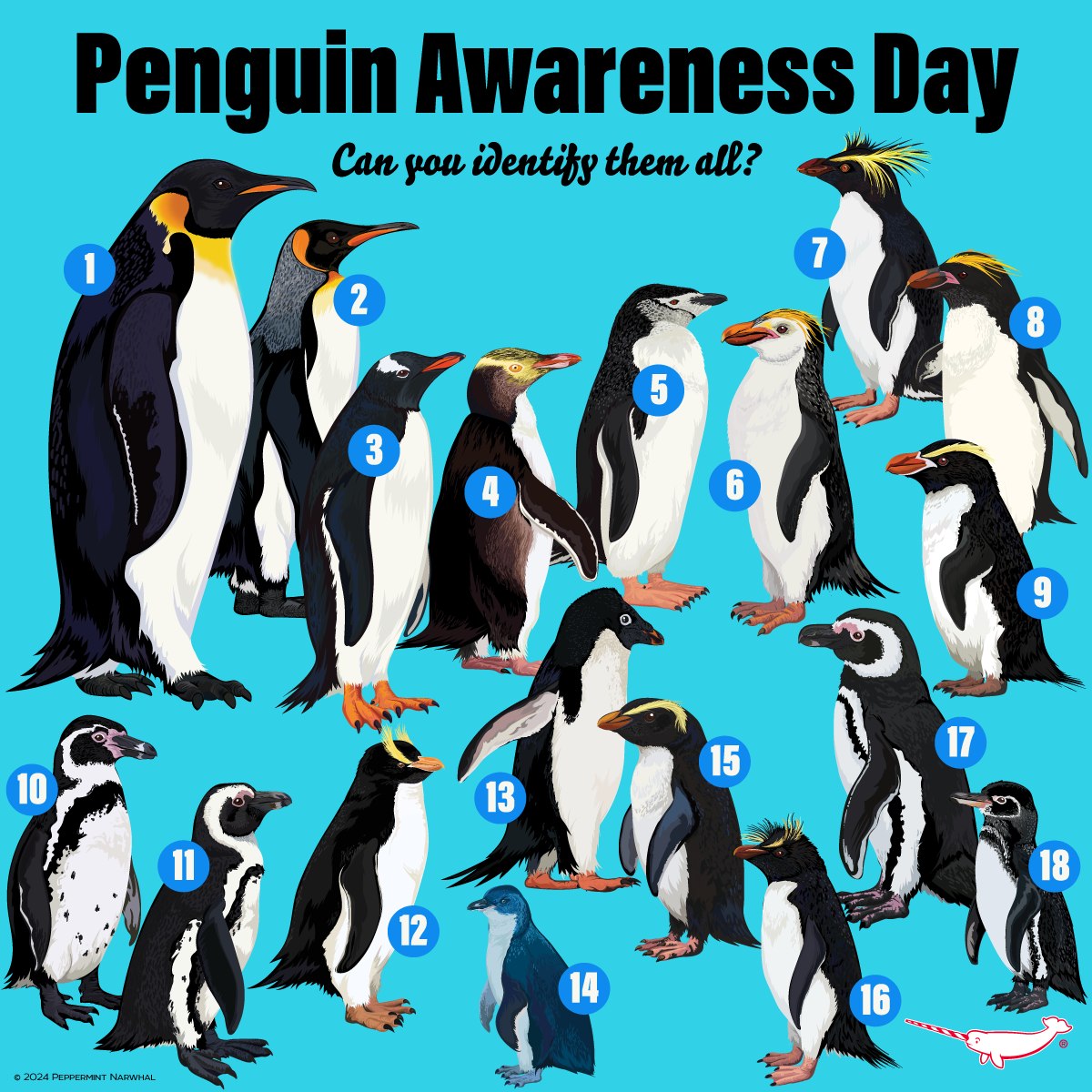– Identification and Characteristics of Different Penguin Species
– The Importance of Penguin Awareness for Conservation Efforts
– Impact of Climate Change on Penguin Habitats
– Innovative Conservation Strategies to Protect Penguins
– How Individuals Can Contribute to Penguin Conservation
Penguins, flightless birds primarily inhabiting the Southern Hemisphere, are among the most recognizable and cherished wildlife species. Penguins’ distinct tuxedo-like appearance and charismatic personalities have captured people’s hearts worldwide. However, many are unaware of the diversity of penguin species and the challenges they face due to environmental threats. Today is Penguin Awareness Day, an opportunity to broaden our knowledge and commit to conserving these remarkable creatures.
There are 18 recognized penguin species, each with unique characteristics and habitats. From the imposing Emperor Penguin, known for its incredible endurance in the harshest Antarctic conditions, to the diminutive Little Blue Penguin, which enchants observers along the coastlines of New Zealand and Australia, these species exhibit a fascinating range of adaptations. The King Penguin boasts vibrant coloration, while the Yellow-Eyed Penguin, native to New Zealand, is known for its striking appearance and shy nature. Each species is crucial in marine ecosystems, serving as predator and prey.
Understanding the challenges penguins face is crucial for their conservation. Climate change poses the greatest threat, dramatically altering penguin habitats. Melting ice sheets and shifting ocean currents affect the availability of krill and fish, essential components of the penguin diet. Pollution, oil spills, and overfishing threaten their food supply, jeopardizing penguin populations.
Innovative conservation strategies have emerged to address these challenges. Protected marine areas and sustainable fishing practices are being implemented to safeguard penguin food sources. Research and monitoring programs aim to better understand penguin biology and ecology, informing conservation decisions. Additionally, rehabilitation centers for injured or oil-contaminated penguins play a vital role in individual animal recovery and population maintenance.
Individual actions can also make a significant impact. Supporting sustainable seafood choices, reducing carbon footprints, and advocating for climate policies contribute to the broader effort of mitigating climate change and protecting penguin habitats. Participating in or donating to conservation organizations dedicated to penguin research and protection helps ensure these initiatives continue.
Penguin Awareness Day celebrates these enchanting birds and educates the public about their diversity and the threats they face. By becoming more Penguin-aware, individuals can take meaningful steps to ensure these species thrive for generations. Engaging in conservation efforts, adopting environmentally friendly practices, and spreading awareness are all ways we can contribute to preserving penguins and their habitats. Today, let’s commit to being champions for penguins and protecting the natural world they call home.
*****
Source Description
Today is Penguin Awareness Day, so let’s see how Penguin Aware you are.
Can you name them all?
ANSWERS –
1. Emperor
2. King
3. Gentoo
4. Yellow-Eyed
5. Chinstrip
6. Royal
7. Northern Rockhopper
8. Macaroni
9. Snares
10. Humboldt
11. African
12. Erect-Crested
13. Adelie
14. Little/Blue/Fairy
15. Fiordland
16. Southern Rockhopper
17. Magellanic
18. Galapagos
PENGUIN AWARENESS CONTEST!
Congratulations, Mickey De, you are our winner! Contact us by private message to redeem your prize.
KICKSTARTER MAKE 100 – MONOTREMES
A new collectible enamel pin series features the world’s only egg-laying mammals, the monotremes, including the platypus and echidnas.
Pledge Now! – https://rb.gy/0lw7he
Search “Monotremes” or “Peppermint Narwhal” on Kickstarter.
The campaign runs now through Feb. 4, 2024.
Shop www.peppermintnarwhal.com.
The 2024 Calendars will sell out soon! Stock is Low!


